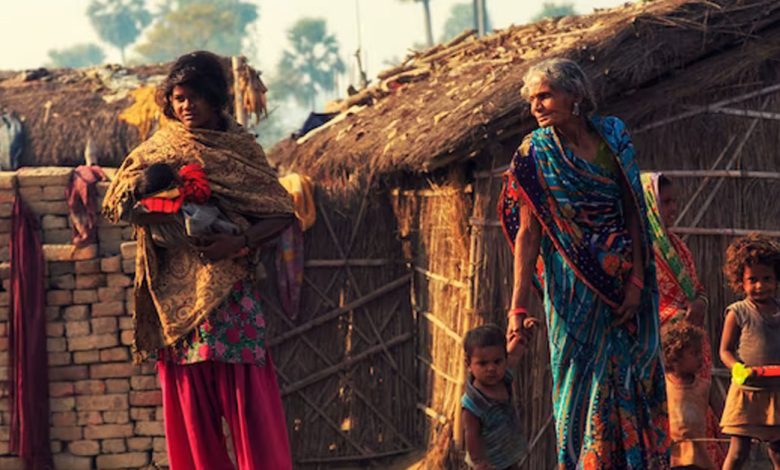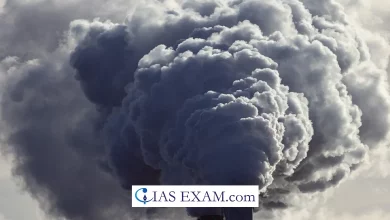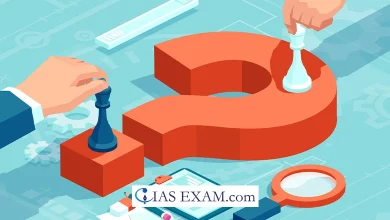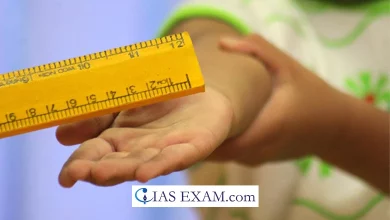Daily Current Affairs for UPSC
Healthcare Challenges faced by Tribal Communities in India
Syllabus- Government Policies and Interventions [GS Paper-2]

Context- Recently, the health care challenges faced by tribal communities in India have come into focus. Regardless of India’s exceptional accomplishments, for example, arising as the world’s fifth biggest economy and its commitment to the worldwide inoculation drive, tribal communities keep on encountering critical healthcare services inconsistencies.
What is the status of Indian tribal communities?
-
- Demographic Status:
- India’s tribal communities make up about 8.9% of the country’s population, making them a significant segment.
- Out of the total Scheduled Tribes population, roughly 2.6 million (2.5%) have a place with “Particularly Vulnerable Tribal Groups” (PVTGs) known as the “Primitive Tribes” – the most impeded of all the Tribal population.
- They are distributed throughout a number of states, with a greater concentration in Madhya Pradesh, Maharashtra, Odisha, Chhattisgarh, Rajasthan, the NER states, and the Andaman & Nicobar Islands.
- Status in Culture:
- Tribes in India have their own rich and different culture, language, and customs.
- They live in harmony with the natural world and earn their living from the hills and forests.
- In terms of health, education, religion, and governance, they have distinct beliefs, practices, and preferences.
- Demographic Status:
- Related Constitutional and Statutory Provisions:
-
- Certain tribal communities in India are perceived as Scheduled Tribes (STs) under Article 342 of the Constitution of India.
- They are qualified for exceptional arrangements and shields for their social, monetary, instructive, and political development.
- Their inclinations are shielded by different regulations and strategies, for example, the fifth and 6gh Booked regions, Woods Freedoms Act 2006, and the PESA Act 1996.
- Through reserved seats, they are also represented in the Parliament and state legislatures.
- India’s first tribal president is Draupadi Murmu.
- Status of Development:
- In terms of poverty, illiteracy, malnutrition, health, employment, infrastructure, and human rights, tribal communities in India face numerous obstacles.
- In terms of various human development indicators like income, education, health, sanitation, and gender equality, they fall short of the national average.
- They are also subjected to non-tribal individuals and institutions’ discrimination, exploitation, displacement, and violence. They have restricted admittance to assets and open doors for their strengthening and interest.
What are the Main Tribal Health Issues?
-
- Malnutrition:
- Tribal people don’t eat enough or the right food to stay healthy. They are deficient in vitamins and minerals, stunting, wasting, and hunger.
- Communicable Diseases:
- Due to a number of factors, including poor sanitation and hygiene and limited access to healthcare, tribal people are more likely to contract infectious diseases like malaria, tuberculosis, leprosy, HIV/AIDS, diarrhoea, respiratory infections, and diseases spread by insects or animals.
- Malnutrition:
- Non-Communicable Diseases:
-
-
- Chronic diseases like diabetes, hypertension, cardiovascular diseases, cancer, and mental disorders are also common among tribal people.
- A study found that 25% of tribal adults have high blood pressure and 13% have diabetes.
-
- Addictions:
-
- Tobacco use, alcohol use, and substance abuse are all potential causes of the aforementioned diseases.
- Over 72% ancestral men 15-54 years old use tobacco and over half polish off liquor against 56% and 30% non-tribal men, individually.
What are the Challenges in Tribal Health?
- Insufficient infrastructure:
-
-
- Lacking medical services offices and foundation in ancestral regions.
- inadequate access to facilities for sanitation and clean water.
-
- Medical professionals are in short supply:
-
-
- There aren’t many doctors, nurses, or other medical professionals in tribal areas.
- inability to recruit and keep skilled healthcare workers in remote areas.
- Imbalance in the circulation of medical care experts, with a fixation in metropolitan regions.
-
- Availability and Geographic Boundaries:
-
-
- Access to healthcare services is hindered by difficult terrain and remote locations.
- inadequate transportation infrastructure, roads, and communication networks
- difficulties in reaching tribal communities during times of emergency and providing prompt medical care
-
- Cost-Effectiveness and Financial Limitations:
-
-
- Restricted monetary assets and low-pay levels among tribal communities .
- inability to pay for medical expenses, such as medications, diagnostics, and medical treatments.
- Inadequate awareness of healthcare plans and insurance options.
-
- Social Awarenesses and Language Hindrances:
-
-
- Unique cultural beliefs and practices that influence how people seek healthcare.
- Language barriers between tribal communities and healthcare providers result in inadequate care and miscommunication.
- Services for healthcare that are sensitive to culture and honor tribal traditions are lacking.
-
- Access to essential services is restricted:
-
-
- Lack of access to essential healthcare services like vaccinations, preventative care, and health care for mothers and children.
- inadequate access to emergency medical services, diagnostic facilities, and specialized care.
- Restricted mindfulness about medical problems, preventive measures, and medical services privileges among tribal communities .
-
- Insufficient resources and funding:
-
- Insufficient funding for health care in tribal areas.
- inadequate investment in healthcare technology, equipment, and infrastructure.
- Absence of committed subsidizing for tending to ancestral wellbeing challenges and carrying out designated intercessions.





.png)



